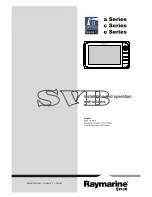
153
13.1
13
.
13
.
GC-2014
13 Detector
13.1
Hydrogen Flame Ionization Detector (FID)
13.1.1
Principle of FID operation
In the hydrogen flame ionization detector (FID), hydrogen gas is mixed with the column
outlet gas at a certain ratio as shown in Fig. 13.1.1.The gas mixture combusts in the air
atmosphere. An electrode exists at each end of the FID jet, and DC voltage is applied
between the electrodes.
If only pure carrier gas (nitrogen, helium or argon) and hydrogen gas are mixed, little current
is produced between the electrodes. When an organic compound is mixed with the carrier
gas, current is produced proportionally to the amount of organic compound present.
This is because ions (mainly carbon ions) are generated when an organic compound
combusts within the hydrogen flame, and the generated ions are captured by the collector.
For isomers, the ion quantity generated is almost proportional to the number of carbons
contained in the compound. However, carbon atoms in a “C=O” form do not create a signal.
The presence o halogens in the compound decreases sensitivity.
Because the ion current obtained by the FID is very low, it is amplified into a proper voltage,
then output to a Chromatopac or personal computer.
Fig. 13.1.1
Summary of Contents for GC-2014
Page 4: ...This page is intentionally left blank ...
Page 12: ...Contents viii GC 2014 This page is intentionally left blank ...
Page 28: ...1 Installation 1 3 Gas Supply Plumbing 16 GC 2014 This page is intentionally left blank ...
Page 78: ...5 Analysis 5 2 Notes for Analysis 66 GC 2014 This page is intentionally left blank ...
Page 90: ...6 Basic Key Operation 6 4 Getting Help 78 GC 2014 This page is intentionally left blank ...
Page 282: ...16 Special Functions 16 10 ROM Version No 270 GC 2014 This page is intentionally left blank ...
Page 318: ...306 GC 2014 This page is intentionally left blank ...
















































